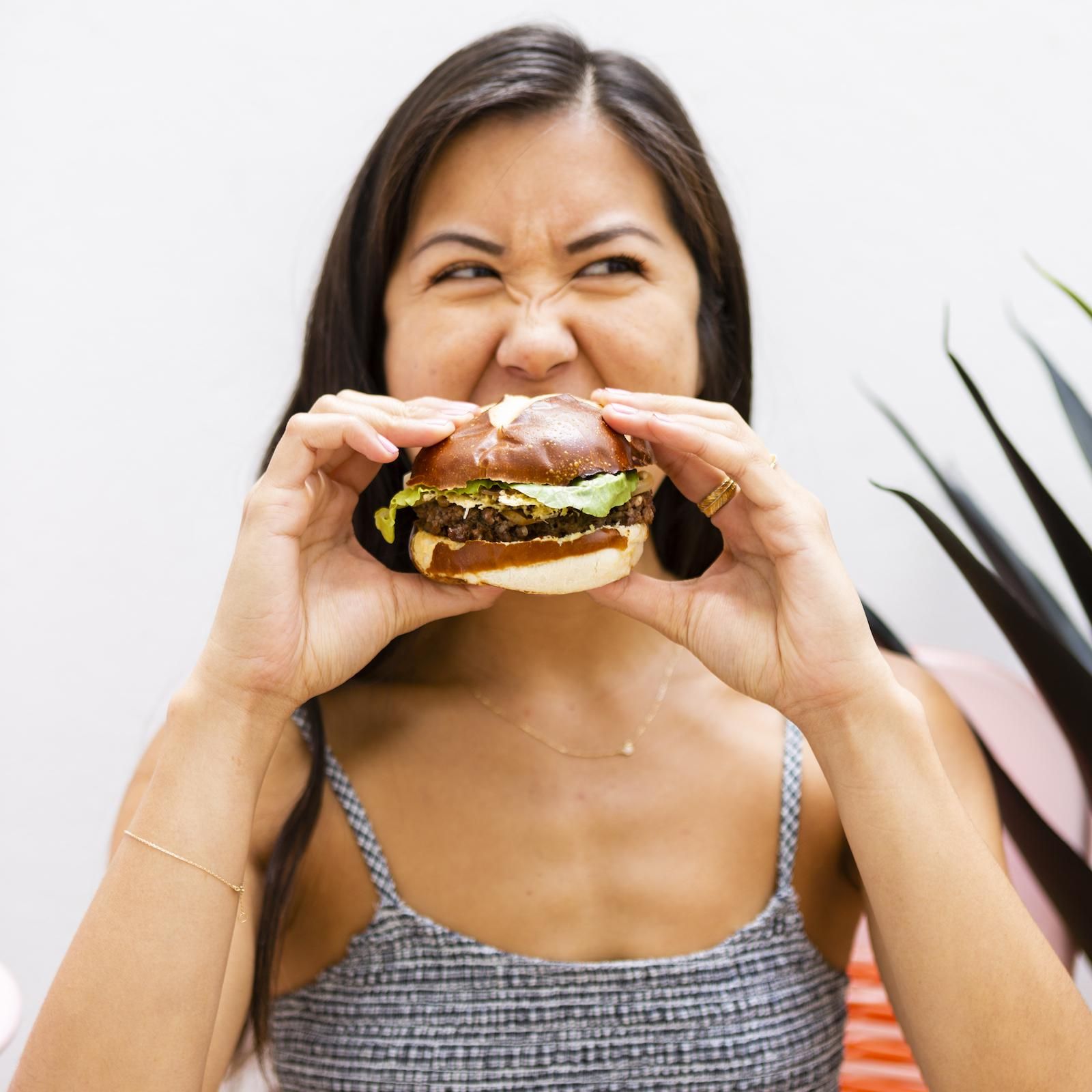Inspired by Food Network’s post about foods that nutritionists won’t eat, we spoke to an expert to understand some of the madness surrounding the trendiest eats right now. Keep reading to see why Maggie Moon, MS, RDN, and author of The MIND Diet, wants us to rethink acai bowls, gluten-free snacks, and more.
1. Reduced-Fat Peanut Butter
There’s no need to switch from a full-fat peanut butter to a reduced-fat option. Moon says the fat in peanut butter is unsaturated and therefore beneficial to our blood vessels and heart. It’s not harmful like saturated and trans fats. What some peanut butter makers do, Moon tells us, is “replac[e] that fat with added sugar [and] possibly some trans-fat and hydrogenated oil to make it smoother [in texture].” No good! Instead, switch to a natural peanut butter that does not have any added sugars in it.
2. Soy Burgers
If you have the choice, opt for homemade veggie burgers filled with whole grains, beans, and veggies over processed soy-based burgers since they aren’t a whole food, meaning you may miss out on key nutrients. Moon says, “The health benefits of whole soy like edamame and some of its derivatives like tofu may not be the same in a soy burger.” That’s because the carbs and oils naturally found in soybeans are extracted, leaving the protein only to make these burgers. This highly manufactured process strips the soy of essential vitamins and fiber too. There is a silver lining though. “[Soy burgers] can be a good swap if you’re trying to reduce cholesterol and saturated fat compared to a traditional beef burger,” Moon says.
3. Pita Chips
Though pita chips may sound better for you because they aren’t fried, Moon says they’re just as bad as any other snack made of refined flour. Simply put, they’re devoid of nutrition. “Pita bread makes you think about Mediterranean food. There’s that health halo around the Mediterranean diet and all of the health benefits,” she says. “People might think of pita chips as an extension of that when really, it’s not so different than a pretzel.” Womp womp.
4. Acai Bowls
Rethink ordering that acai bowl with the sugary granola and fruit cut-outs. “For the healthiest acai bowl ever, it’s better to make it yourself so that you can manage the portions and also the toppings,” says Moon. “It’s really about what’s available in the marketplace. Often, the portions are too big. They add in all kinds of sugar, and the toppings [amount to] a ton of calories.”
5. Gluten-Free Snacks
The term “gluten-free” is one of those buzzwords that we somehow equate to being healthy. To combat that idea, Moon explains, “An overly processed food is an overly processed food. A lot of these gluten-free treats are treats that originally have flour in them like a cake or a cookie. They’re using other ingredients low in fiber, [added] saturated fat to make up for moisture loss, and a lot of added sugar. It’s no healthier than the original.”
6. Veggie Straws
The word “veggie” is literally in the title — how can this snack not be healthy? Sorry, but these corn-based straws are usually made from a negligible amount of veggies. “A half cup of carrots is like 20 to 25 calories and [contains] good nutrients, antioxidants, vitamin A, fiber… all of that good stuff,” Moon says. “If you look at a serving of veggie straws, it’s five times the calories; there are no antioxidants and no fiber. It’s much closer to chewing a chip than a veggie.”
7. Energy Bars
Add a spin class and after-work event to an already long day, and it makes sense why you would need a little something extra to get you through the day. Before you reach inside your bag for an energy bar, you might want to reconsider it. Though energy bars are oftentimes viewed as snacks, Moon says they really shouldn’t be due to the high calories and added sugar; she says, “It just ends up adding extra calories.” For a helpful reminder, when you see the word “energy,” replace it with the word “calories.” An energy bar equals a high-calorie bar.
The Bottom Line
To introduce real healthy foods to your diet, Moon suggests sticking to foods that do not have labels like fruit, vegetables, and even seafood. Another indicator? Look for the heart checkmark, a certification from the American Heart Association that symbolizes that the product meets its criteria to be a heart-healthy food. But as always, read your nutrition labels to understand what you’re about to ingest. Regardless if you’re at home or the office, keep wholesome foods within arm’s reach, and put away the sweets and treats.
Are there any foods that you won’t eat for health reasons and why? Let us know @BritandCo.
Brit + Co may at times use affiliate links to promote products sold by others, but always offers genuine editorial recommendations.
This post has been updated.


